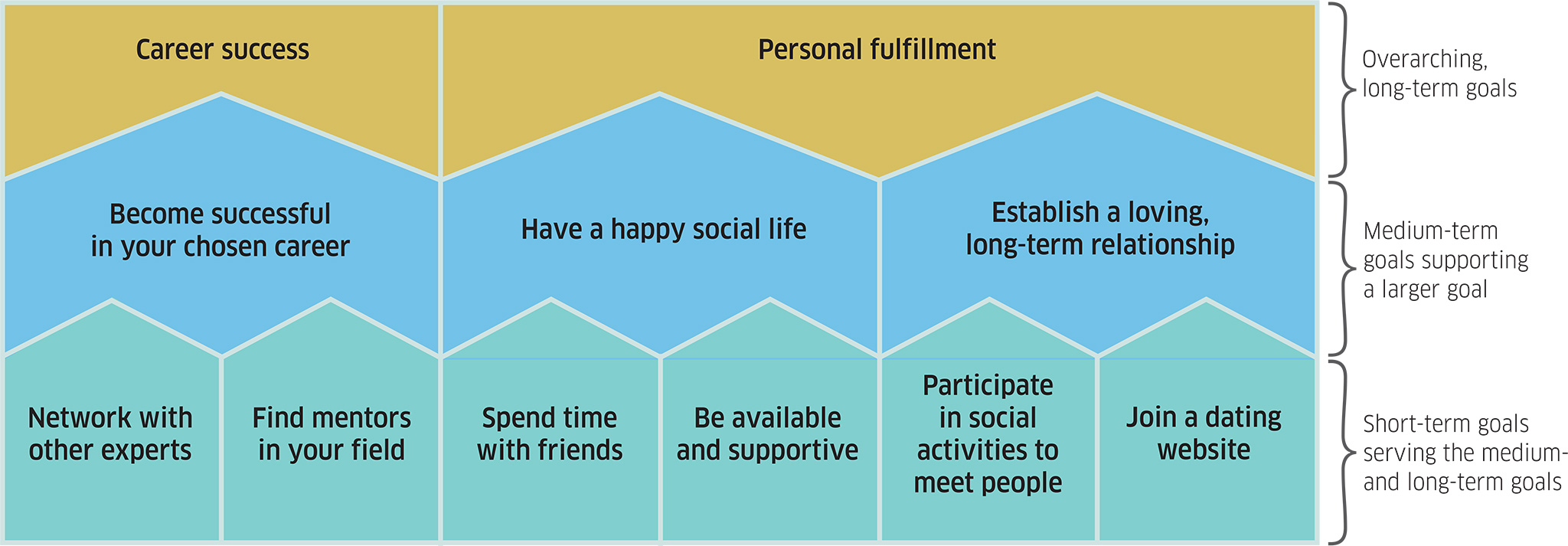
Achieving long-term goals takes persistence, which often means you need to delay short-term gratification. How can you learn to say “no” to immediate rewards if they conflict with your bigger plans?
We all have multiple goals that we seek to fulfill, and which give us the feeling of being successful. Unfortunately, many distractions can cause us to focus on short-term good feelings (“I want to buy a new car”) rather than on the longer-term goal (“I want to pay off my student loans so I can save more and buy a house”). The feelings triggered by the desire to fulfill both the short-term desire (driving a nice car) and the long-term desire (getting on the property ladder) can evoke powerful, compelling feelings that impact our choices.
The struggle comes when our long-term priorities come into conflict with other desires which, while less important to us overall, are easier to undertake and more fun in the short term.
Making choices
A 2014 study by American psychologists Angela Lee Duckworth and James Gross argues it’s partly a matter of hierarchy. We don’t just have one goal: we have big, overarching goals, and then smaller goals that tend to be more practical and action-oriented. Problems arise when these clash. At that point, we need to go back and decide which of the long-term goals is most important (see “The hierarchy of goals,”). When we have to make a choice, it’s helpful to be able to distinguish between what are competing priorities and what are everyday short-term temptations.
Resisting that marshmallow
The “marshmallow test” was performed by Walter Mischel at Stanford University in the 1960s. In this test, a group of four-year-olds were offered a marshmallow and left alone in a room, having been promised that if they resisted eating it until the experimenter returned 15 minutes later, they could have the marshmallow and a second one as well. This longitudinal study followed these children over many years and found that those who had resisted the marshmallow turned out, in later life, to be doing better academically, health-wise, and indeed in life in general. The findings of this research sparked a series of studies that focused on understanding the dynamics of self-control and how people respond in different situations.
Testing the marshmallow test
In 2013, a further experiment was done by a group of American researchers to test the original marshmallow theory. In the second test, children were given the same choice of one marshmallow immediately, and, if they could resist eating it, a second one later too—but with a twist. Before the marshmallows came promises about crayons and stickers. The children were told that if they waited before they started using the crayons and stickers, the experimenters would return with better crayons and stickers. With some children, the better supplies did appear; with others, the experimenters came back empty-handed.
The result? The “reliable environment” group resisted the marshmallow four times longer than children who had experienced an “unreliable environment.” The researchers surmised that the marshmallow test is more a measure of how much trust a child has in their circumstances: for children who had reason to believe a promise, resisting that marshmallow was much easier.
Perhaps the key to self-control is directly related to emotional intelligence and the ability to understand how your emotions are impacting your responses and behaviors. Psychologist Daniel Goleman identifies self-regulation as one of the elements of emotional intelligence: this means you don’t make decisions on impulse, and you are able to delay gratification. Next time you need to strengthen your resolve, listen to what’s going on in your head and heart.

The hierarchy of goals
Even if you have a particular aspiration that outshines all the others, it’s helpful to think in terms of multiple goals. One approach is to consider them as long-term, medium-term, and short-term: that way, your long-term goal or goals can be as broad as you need, and you can keep your short-term goals practical. Draw up a chart, and see if any of your short-term goals conflict with each other—for instance, does networking with clients at a conference conflict with time spent socializing with friends and family? If you can lay it out in this way, it may be easier to decide which short- and medium-term goals best support your long-term goals, and prioritize your decisions accordingly.

